In 2021, Apple unveiled the iPhone 13 as the successor to the popular iPhone 12, with improved rear cameras, longer battery life, the A15 Bionic chip, and more. Despite being from different annual generations, both the iPhone 12 and the iPhone 13 mini are still available from Apple for a price of $599, leading many customers to consider which device they should buy.
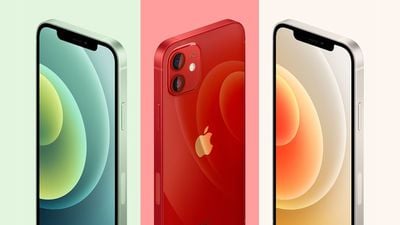
At $599, both devices sit above the $429 iPhone SE in Apple's product lineup, adding features like OLED displays and Face ID. The iPhone 13 mini is a more modern device than the iPhone 12, and features the same battery life as the larger device despite having a smaller internal battery, but it does come at the cost of display area.
As the iPhone 12 and iPhone 13 mini share a large number of features, should you consider purchasing the older model to save money? Our guide helps to answer the question of how to decide which of these two iPhones is best for you.
Comparing the iPhone 12 and the iPhone 13 Mini
The iPhone 12 and iPhone 13 mini share a large number of key features, such as OLED Super Retain XDR displays, Face ID, 5G connectivity, MagSafe, and Ceramic Shield. Apple lists these identical features of the iPhone 12 and iPhone 13 mini:
Similarities
- OLED Super Retina XDR display with HDR, True Tone, P3 wide color, and Haptic Touch
- Face ID
- 6GHz 5G connectivity (and mmWave in the U.S.)
- Six-core A-Series Bionic chip
- 4GB of memory
- Dual 12MP ƒ/2.4 Ultra Wide and ƒ/1.6 Wide cameras with two-times optical zoom out
- Photography features including Night mode, Deep Fusion, True Tone flash with Slow Sync, Portrait mode, and more
- Videography features including 4K video recording at up to 60fps, HDR video recording with Dolby Vision, Audio zoom, slo-mo video up to 240fps at 1080p, Night mode Time-lapse, and more
- Ceramic Shield front
- IP68 rated splash, water, and dust resistance
- Aerospace-grade aluminum
- MagSafe and Qi wireless charging
- Lightning connector
- Up to 17 hours battery during video playback
- Available with 128GB and 256GB storage options
- Available in (PRODUCT)RED
Apple's breakdown shows that the iPhones share a large number of notable key features. Even so, there are some meaningful differences between the iPhone 12 and iPhone 13 mini, such as their processors and display brightness, that will be important when weighing up which device to choose.
Differences
| iPhone 12 | iPhone 13 mini |
|---|---|
| 6.1-inch Super Retina XDR display | 5.4-inch Super Retina XDR display |
| 625 nits max brightness (typical) | 800 nits max brightness (typical) |
| "Notch" | 20 percent smaller "notch" |
| A14 Bionic chip | A15 Bionic chip |
| Dual SIM (nano-SIM and eSIM) | Dual SIM (nano-SIM and eSIM) and dual eSIM support |
| Optical image stabilization for video | Sensor-shift optical image stabilization for video |
| Smart HDR 3 for photos | Smart HDR 4 for photos |
| – | Photographic Styles |
| Dolby Vision HDR video recording up to 4K at 30fps | Dolby Vision HDR video recording up to 4K at 60fps |
| – | Cinematic mode video recording with shallow depth of field (1080p at 30 fps) |
| Weighs 164 grams | Weighs 141 grams |
| Available in Purple, Blue, PRODUCT(RED), White, and Black | Available in Starlight, Midnight, Blue, Pink, Green, and PRODUCT(RED) |
| Available with 64GB, 128GB, and 256GB storage options | Available with 128GB, 256GB, and 512GB storage options |
Read on for a closer look at each of these aspects, and see what exactly both iPhones have to offer.
Design and Colors
Both the iPhone 12 and the iPhone 13 mini have the same industrial design with squared-off edges and a flat aluminum band around the sides. The devices use aerospace-grade aluminum on the edges and a single piece of polished glass on the rear. The iPhone 13 mini's dual rear cameras are offset against each other diagonally, as opposed to the iPhone 12's vertical orientation.
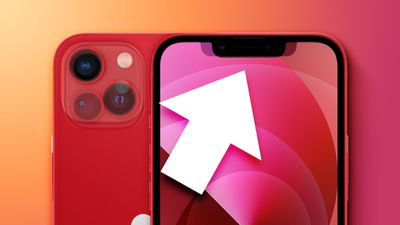
The iPhone 13 mini features a 20 percent smaller notch for the TrueDepth camera array, which frees up more display area and makes the cutout less obtrusive. Other than the rear camera positioning and the smaller notch, the devices look otherwise the same.
As a smaller phone, the iPhone 13 mini is shorter and narrower than the iPhone 12. The size of the iPhone 13 mini makes it much more pocketable than the iPhone 13.
Another factor that demarcates the difference between the two devices is their weight. The iPhone 13 mini is 23 grams (0.81 ounces) lighter than its larger counterpart, at just 141 grams (4.97 ounces) in total. If you want the smallest and lightest possible iPhone, the iPhone 13 mini will be a better choice than the iPhone 12.
The iPhone 12 is available in Purple, Blue, Green, White, and Black, while the iPhone 13 mini is available in Starlight, Midnight, Blue, Pink, and Green. Both are also available in PRODUCT(RED). The two shades of Blue are similar, as are White and Starlight, and Black and Midnight. As similar-looking devices, preference for either the iPhone 12 or the iPhone 13 mini in terms of design and colors will come down to personal taste.
Display
The iPhone 12 and the iPhone 13 mini both have a OLED Super Retina XDR display with HDR, True Tone, P3 wide color, and Haptic Touch. The only difference with the iPhone 13 mini's display is that it is able to get 175 nits brighter during typical non-HDR use, but this is not a major reason to get the newer model.
The most noticeable difference between the iPhone 13 mini and iPhone 12 is the size of their displays. The iPhone 13 mini has a display size of 5.4-inches and the iPhone 12 has a display size of 6.1-inches. This means that the larger phone will be able to show more content on the screen, with the UI elements of apps spaced further apart and items such as the keyboard being bigger.
Nevertheless, the smaller phone is easier to use with one hand. For example, the Control Center is easier to reach at the top of the screen, and users may feel more comfortable swiping around iOS on a smaller display with a firmer grip.
The main reason to prefer the iPhone 13 mini will be because of its better fit in the hand and easier one-handed use. Likewise, those that want a larger display for media consumption, being the same size as the iPhone 14, will clearly prefer the 6.1-inch iPhone 12.
A14 vs. A15
The iPhone 13's A15 Bionic chip brings a modest performance improvement over the A14 Bionic in the iPhone 12. Benchmarks show that the A15 in the iPhone 13 offers around 10 percent better single-core performance and 18 percent better multi-core performance compared to the iPhone 12's A14 chip. In graphics tasks, the iPhone 13 performs roughly 15 percent better than the A14 Bionic in the iPhone 12.
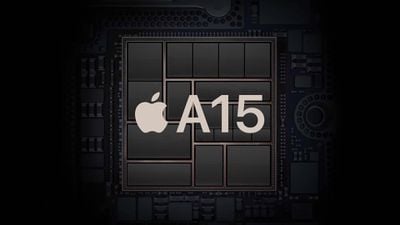
These performance improvements with the A15 are iterative rather than a substantial reason to upgrade alone. The A14 is still an extremely capable chip, and in day-to-day use, the two devices are likely to perform similarly, although the A15 chip may be supported for longer and perform better over time.
Dual SIM
Both devices support dual SIM, with one physical nano-SIM and an eSIM, but the iPhone 13 mini is also able to support two eSIMs simultaneously. If you need to switch between two eSIMs, you will need to get the iPhone 13 mini to get this functionality.
Cameras
The iPhone 12 and iPhone 13 mini have dual 12MP rear cameras with a ƒ/2.4 Ultra Wide and a ƒ/1.6 Wide camera. The iPhone 13 mini's Main camera features a larger sensor than the iPhone 12, capable of capturing 47 percent more light for less noise and brighter images, and the Ultra Wide features a new sensor to capture more detail. The Main camera also contains sensor-shift optical image stabilization technology for smoother video and improved image quality.
Although the devices can both record Dolby Vision HDR video, the iPhone 13 is able to record this up to 60 fps, as opposed to the iPhone 12's 30 fps.
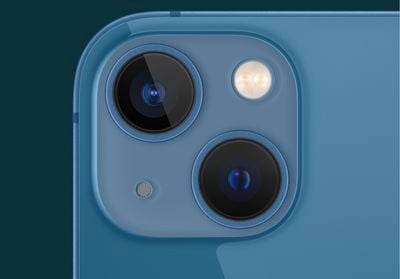
The iPhone 13 mini features Cinematic mode, which allows users to record video with a shallow depth of field at 1080p and 30fps. Cinematic mode can rack focus to seamlessly shift the focus from one subject to another when capturing video. It holds focus on the subject while blurring the background, and can automatically change the focus when a new subject is about to enter the scene. Blur and focus can be adjusted after capturing video as well through the Photos app.
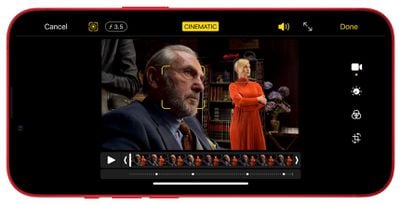
The iPhone 13 mini also supports Photographic Styles, which are smart, adjustable filters that can do things like boost or mute colors without affecting skin tone. Styles apply selectively to an image, unlike a filter that is applied to the entire image. Photographic Styles include Vibrant (boosts colors), Rich Contrast (darker shadows and deeper colors), Warm (accentuates golden undertones), or Cool (accentuates blue undertones). Tone and Warmth are customizable for each style, so you can get the exact look that you want.
While the iPhone 12 and iPhone 13 mini feature cameras with similar specifications, the iPhone 13 mini offers Dolby Vision HDR video at a higher frame rate, Cinematic mode, and Photographic Styles, as well as hardware improvements such as a larger sensor and sensor-shift stabilization. The iPhone 12's camera is still highly capable, but with more photography and videography options and improved image quality, the iPhone 13 mini is the better option.
Storage
A key area to consider when weighing up the iPhone 12 and iPhone 13 mini is storage. While both devices start at $599, the iPhone 12 features a base storage configuration of 64GB, while the iPhone 13 mini offers 128GB of storage for the same price. The iPhone 12 with 128GB of storage costs $649 and at 256GB it costs $749, $50 more than the iPhone 13 mini with the same amount of storage. If storage is a priority for you, it may be better to get the iPhone 13 mini since higher storage quantities come in at a lower price across the board.
The iPhone 12 is also not available with a 512GB configuration, unlike the iPhone 13 mini. This means that if you need more than 256GB of storage, you will need to get the iPhone 13 to have the option of a larger 512GB storage capacity.
Final Thoughts
The iPhone 13 mini's upgrades over the iPhone 12 are mostly iterative, offering refinements in terms of a brighter display, a smaller notch, performance improvements, and new camera software features. The more significant upgrades include the camera hardware, but at face value there is likely not enough to justify getting the new model over the iPhone 12 for those who mainly want a larger display. The iPhone 12's A14 Bionic chip and dual-camera setup are still highly capable for everyday use, and the device shares an overwhelming majority of the iPhone 13 mini's most versatile features, such as a 17-hour battery life, 5G connectivity, Night mode, MagSafe, and IP68 water resistance.
However, when looking at the 128GB and 256GB storage options only, since these options are available with both models, the iPhone 13 mini costs less than the iPhone 12. If you need more than 64GB of storage and do not want a larger display, you should buy the iPhone 13 mini – especially considering that it comes with additional features and is a year newer. If 64GB of storage is sufficient for you, it will be a case of deciding if the iPhone 13 mini's selection of improvements and extra storage are worth sacrificing a larger display.

















